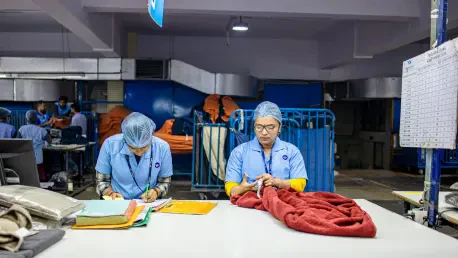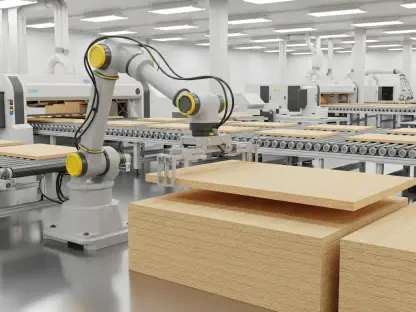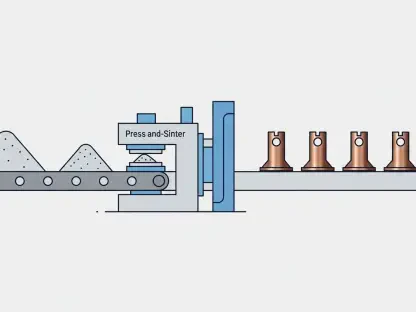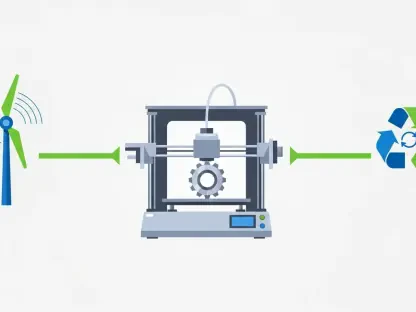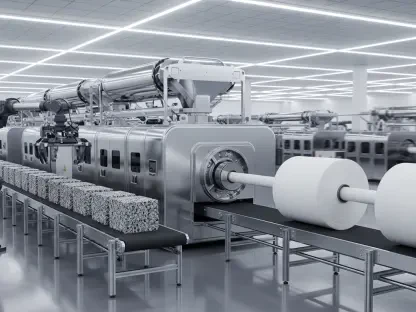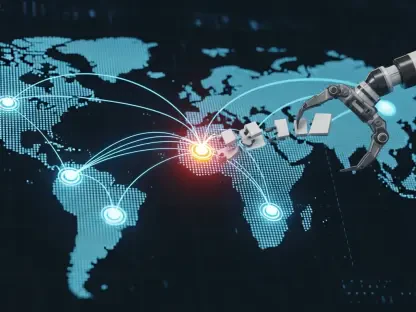India’s textile industry, a cornerstone of the nation’s economy with deep historical roots, is on the cusp of a transformative era thanks to recent updates in government policy. With millions of jobs and a significant share of exports tied to this sector, the Ministry of Textiles has rolled out critical revisions to the Production Linked Incentive (PLI) Scheme, focusing on Man-Made Fiber (MMF) Apparel, MMF Fabrics, and Technical Textiles. Announced in New Delhi, these changes are designed to tackle longstanding hurdles, streamline business operations, and position India as a dominant force in the global textile market. By reducing financial barriers, expanding product eligibility, and offering operational flexibility, the revised scheme promises to ignite fresh investments and foster sustainable growth. This development signals a robust commitment to enhancing competitiveness and creating employment opportunities in a sector that has long been a vital part of India’s industrial landscape, setting the stage for an exciting period of expansion and innovation.
Lowering Barriers for Broader Participation
The revised PLI Scheme introduces a pivotal change by significantly lowering the financial thresholds for entry, making it accessible to a wider array of businesses. For new applicants, the minimum investment requirement in the Part-1 category has been slashed from a steep figure to just Rs.150 crore, while the Part-2 category now stands at Rs.50 crore. This adjustment, effective as of recent policy updates, aims to invite smaller and mid-sized enterprises into the fold, democratizing access to incentives that were previously out of reach for many. By reducing these capital demands, the government is fostering an environment where diverse players can contribute to the industry’s growth. This move is expected to stimulate sector-wide expansion, as companies that once hesitated due to high entry costs can now confidently invest in scaling their operations and enhancing their market presence, ultimately strengthening India’s textile ecosystem on a global scale.
Beyond the lowered investment thresholds, another key amendment focuses on easing the performance criteria for earning incentives under the scheme. Starting from the fiscal year 2025-26, the incremental turnover requirement for participants has been relaxed from a challenging 25% to a more manageable 10% from the second year onward. This change alleviates the pressure on businesses to achieve rapid, often unsustainable growth targets, allowing for steadier and more consistent progress. Such flexibility is particularly beneficial for newer entrants or smaller firms that may lack the resources to scale aggressively in the short term. By prioritizing long-term stability over immediate results, the policy reflects a nuanced understanding of the financial challenges faced by textile manufacturers. This adjustment not only encourages sustained participation but also aligns with broader economic goals of building a resilient industry capable of weathering global market fluctuations with confidence.
Expanding Scope and Operational Flexibility
A significant aspect of the updated PLI Scheme is the broadening of eligible products, ensuring that more businesses can tap into the benefits offered. The Ministry has added 8 new Harmonized System of Nomenclature (HSN) codes for MMF Apparel and 9 for MMF Fabrics, reflecting a responsive approach to evolving industry demands. This expansion allows a greater variety of products to qualify for incentives, catering to emerging trends in both domestic and international markets. Additionally, the requirement to establish new companies for project units has been removed, enabling applicants to set up operations within existing corporate structures. This simplification reduces administrative burdens and enhances operational ease, making it more practical for firms to participate. Such measures are poised to attract a diverse pool of manufacturers, from established giants to innovative startups, thereby enriching the sector with varied expertise and perspectives.
Complementing these changes, the extended application window offers companies additional time to prepare and join the initiative. With the deadline now set until the end of the current year, businesses have a valuable opportunity to align their strategies with the revised framework. This extension underscores the government’s intent to maximize participation and ensure that no potential contributor is sidelined due to timing constraints. It also provides a buffer for firms to assess market conditions, secure funding, and plan their investments effectively. The focus on inclusivity through these operational adjustments highlights a strategic vision to transform India into a global textile manufacturing hub. By removing rigid structural mandates and offering a more accommodating timeline, the policy fosters an environment conducive to innovation and growth, encouraging stakeholders to play an active role in shaping the future of the industry while addressing both immediate and long-term challenges.
Strategic Impact on Industry Growth
The overarching strategy behind these revisions reveals a clear emphasis on scalability and sustainable development within the textile sector. Lowering financial and operational barriers is expected to draw a wide range of investors, from large corporations to smaller enterprises, creating a more dynamic and competitive market landscape. The relaxed turnover criteria further support this by allowing participants to focus on gradual improvement rather than chasing unattainable short-term gains. This balanced approach ensures that growth is not only rapid but also enduring, aligning with global demands for sustainable practices in manufacturing. As a result, the scheme is likely to bolster India’s reputation as a reliable and innovative textile producer, capable of meeting diverse consumer needs while maintaining economic stability. The emphasis on inclusivity also means that regional disparities in industrial capacity could narrow, as smaller players gain the tools to compete on a larger stage.
Moreover, the inclusion of additional product categories under the scheme positions the industry to capitalize on emerging global trends, particularly in technical textiles and sustainable materials. This forward-thinking adjustment ensures that Indian manufacturers remain at the forefront of innovation, meeting the rising demand for specialized fabrics and eco-friendly solutions. The policy’s comprehensive nature, addressing both financial constraints and market access, creates a robust framework for long-term success. It also signals to international markets that India is committed to modernizing its textile sector, potentially leading to increased foreign direct investment and partnerships. By aligning domestic capabilities with global expectations, the revised scheme lays a strong foundation for enhancing export potential, generating employment, and contributing significantly to national economic growth over the coming years, while maintaining a competitive edge.
Reflecting on a Transformative Policy Shift
Looking back, the amendments to the PLI Scheme marked a defining moment for India’s textile industry, showcasing a deliberate effort to address multifaceted challenges with precision. The reductions in investment thresholds and turnover requirements alleviated financial pressures, while the expanded product eligibility and operational flexibilities streamlined business processes. The extended application period ensured that companies had sufficient time to adapt and engage with the initiative. These measures collectively revitalized the sector, paving the way for increased investments and job creation at a critical juncture. As the industry responded to these changes, it became evident that such policies had the power to reshape India’s standing in the global market. Moving forward, stakeholders should focus on leveraging these incentives to drive innovation, prioritize sustainability, and explore untapped international opportunities, ensuring that the momentum gained translates into lasting economic impact.
